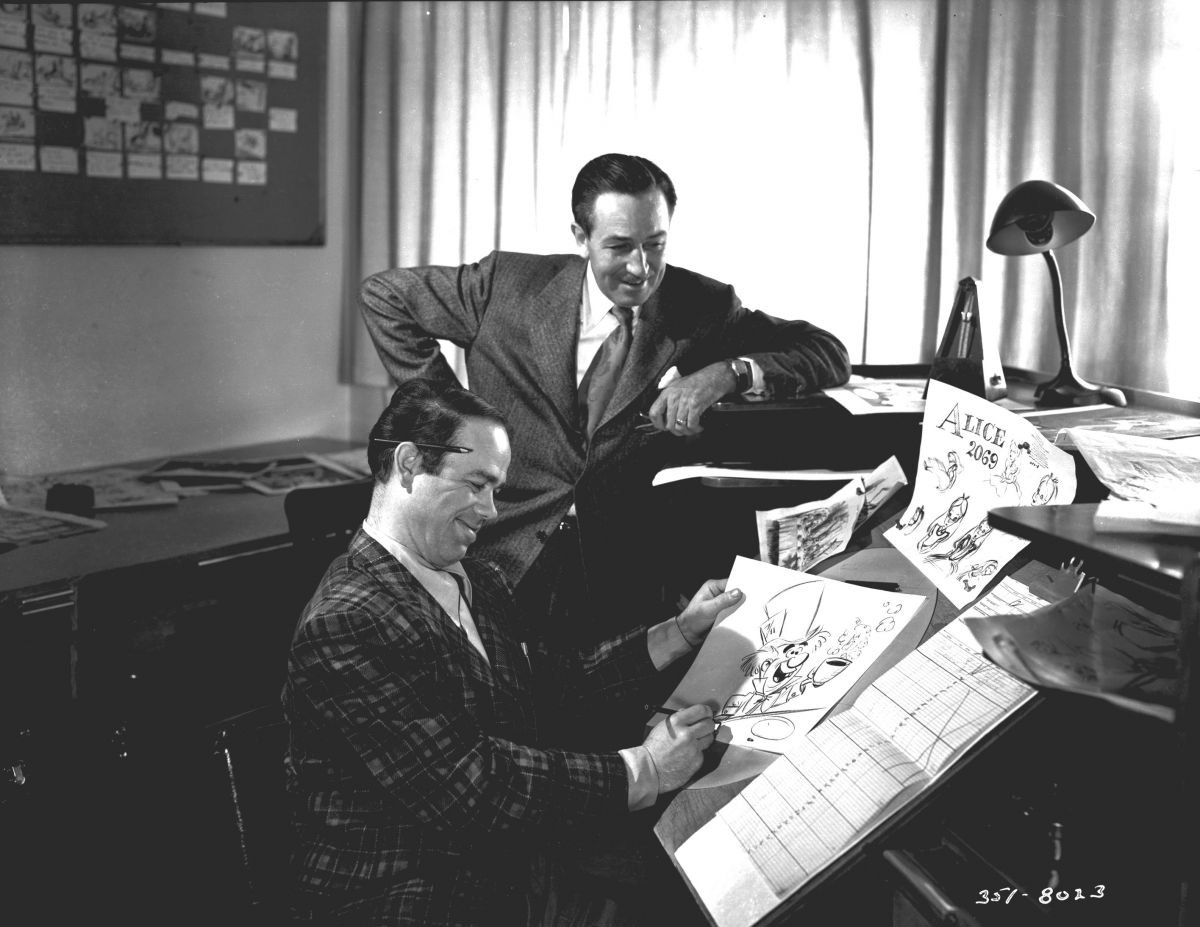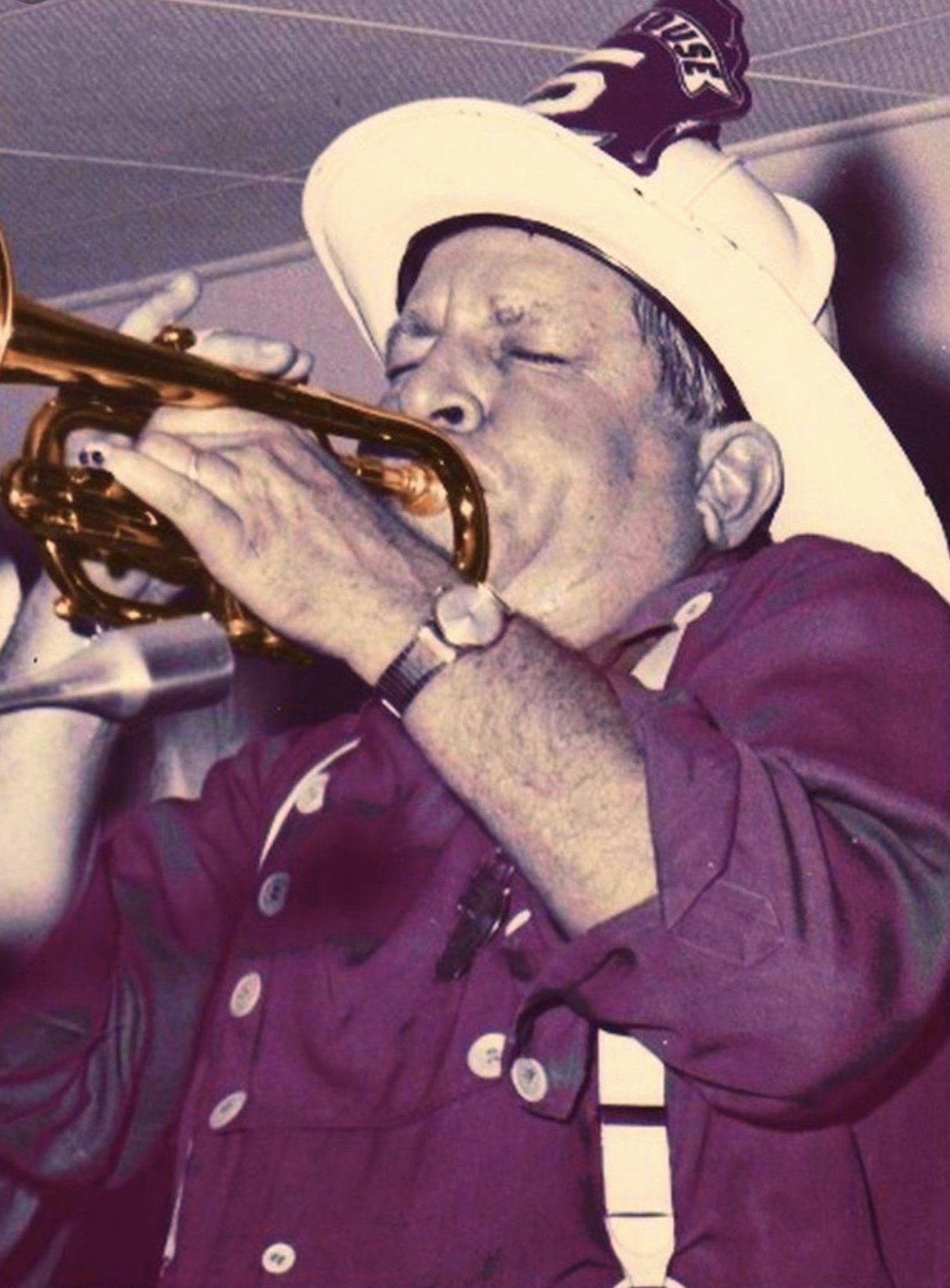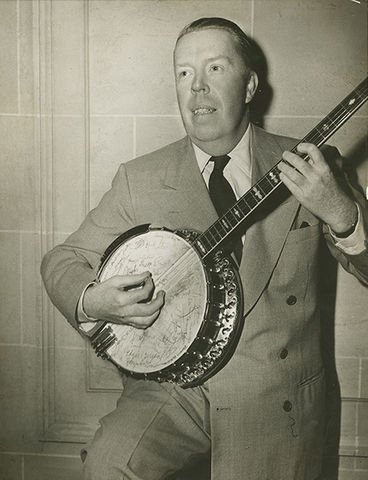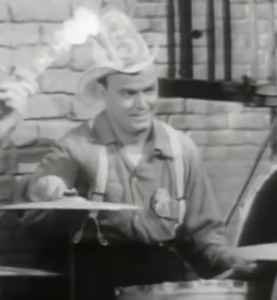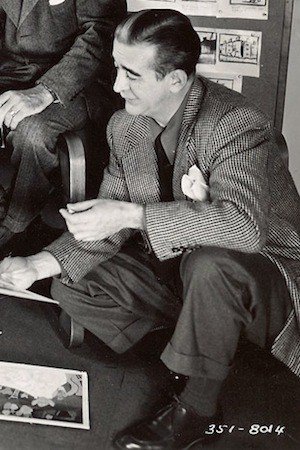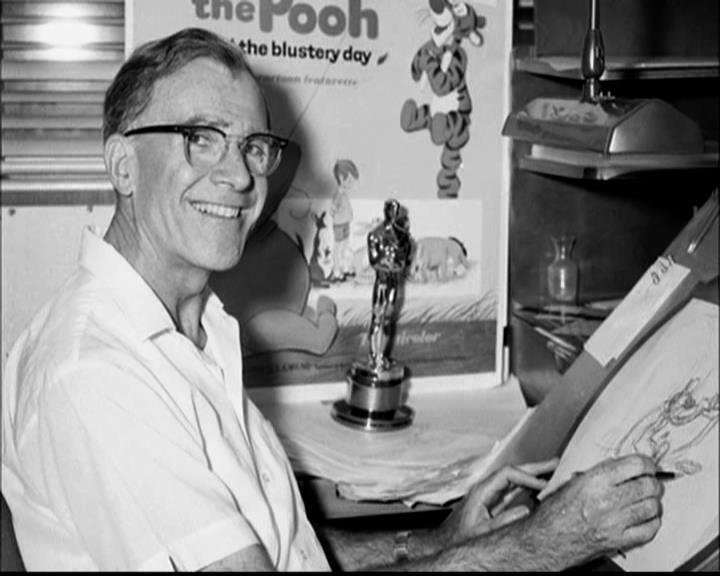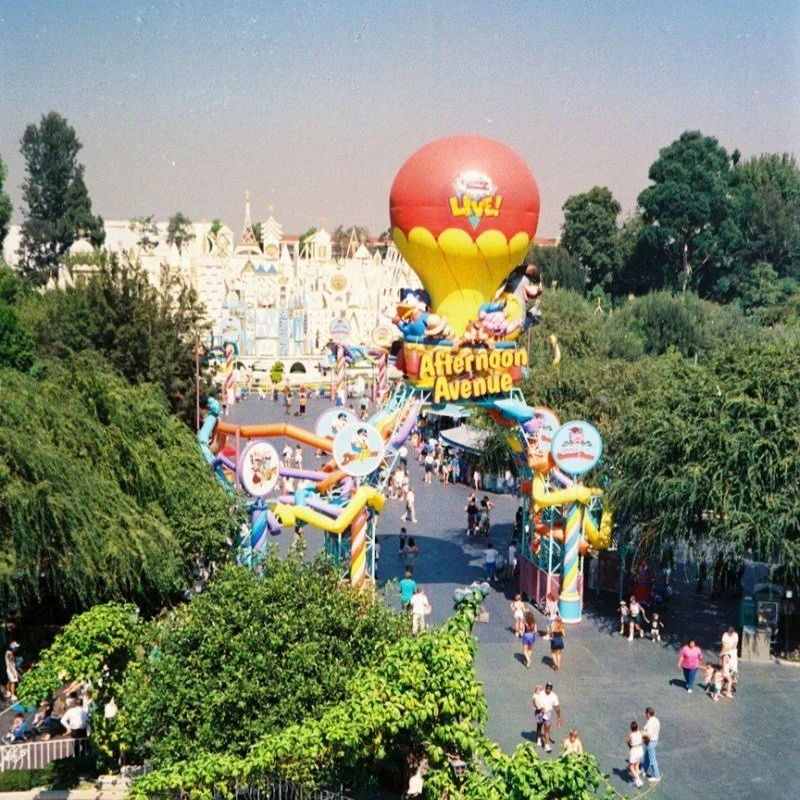The Firehouse Five Plus Two - Disney's Jazz Band
If you’ve ever spent time in a long term position with a company, you’ve likely spent a lot of time with the same coworkers too. For a job such as an animator or Imagineer, the long hours spent together can often result in the best of friendships. This can be said about a particular group of men at the Walt Disney Studios who enjoyed their time together so much, they decided to form a jazz band. The Firehouse Five Plus Two was born in the mid-1940s, headed by legendary American animator, Ward Kimball.
The Firehouse Five Plus Two. Image from: https://d23.com/a-to-z/firehouse-five-plus-two/firehouse-five-plus-two-2/
The Beginnings of Firehouse Five plus two
Ward Kimball was a part of Disney’s Nine Old Men. His journey leading him to Disney in the early 1930s was nothing short of fate. Ward enrolled in the Santa Barbara School of Art in California, after a childhood of interest in drawing and cartoons. As he made his way to California, he caught a showing of Walt Disney’s Three Little Pigs, and immediately knew that that was something he wanted to be a part of. He applied for a position, got it, and began animating right away. Through 1934 to 1937, Ward worked on 13 shorts, including the notable Goddess of Spring, Tortoise and the Hare, and The Wise Little Hen, Donald Duck’s debut.
Ward played a major role in Disney’s early feature films, including being the supervising animator for Jiminy Cricket in Pinocchio, the animation supervisor for The Pastoral Symphony segment in Fantasia, an animation director for Dumbo, and being a lead animator through the Wartime Era in the 1940s. He started to do more focused character animation work in the Silver Era in the 1950s, being credited for Lucifer, Jaq, and Gus in Cinderella, and the Mad Hatter, March Hare, the Walrus, Cheshire Cat, and Tweedle Dee and Tweedle Dum in Alice in Wonderland.
Outside of his passion for drawing, Kimball also had a passion for music. He specifically loved jazz musicians like King Oliver, Baby Dodds, and Louis Armstrong. He would bring his jazz records to work with him at the Walt Disney studios and listen to them on his lunch break. This eventually garnered the attention from other workers in the building, and overtime they would create a tradition of meeting during their lunch breaks to listen to the jazz music. Some of them had some experience with instruments from their time in school as young boys, so they began to play along with the records as well. Ward recalls the moment they knew they could form a band:
“One day the phonograph broke down right in the middle of “Royal Garden Blues.” Undaunted, we kept right on playing and found to our amazement that we sounded pretty good all by ourselves!”
Walt was also a huge fan of music, sometimes even staying late just to hear the Sherman Brothers practicing for Mary Poppins. Before this time, Walt would listen to his staff jiving together, and enjoying it himself, just as long as they wouldn’t quit their day job to tour the world.
Ward Kimball and Walt Disney. Image from: https://www.waltdisney.org/blog/animated-contrarian-celebrating-ward-kimballs-centennial-year
The Original Band Members and Names
The original members of the band, along with Ward, were Danny Alguire, Harper Goff, Clarke Mallery, Monte Mountjoy, Ed Penner, and Frank Thomas.
Danny Alguire
Danny didn’t start out at Disney like the rest of his bandmates, but was instead a professional trumpeter. He began his professional music career in 1933 during the Great Depression as a means of survival. Through the 1940s, he joined several jazz bands and recorded albums, and by the end of the 1940s, he was a part of the Firehouse Five Plus Two. After he joined the band as the cornetist, he began working for Disney in 1955 as an assistant director in the animation department.
Harper Goff
Harper Goff started his time with Disney when he ran into Walt at a model train store, where the two were vying for the same locomotive. Walt bought the locomotive, but offered Goff the chance to come to the studio after finding out he was an artist. Harper Goff is credited for playing leading and pivotal roles in the production of 20,000 Leagues Under the Sea, the design of Main Street USA, The Jungle Cruise, and eventually some of the pavilions for EPCOT. Goff played the banjo for the band.
Clarke Mallery
Clarke’s life began with the talents of his mother and father, who were singers and musically inclined. Clarke studied violin, clarinet, and sang all throughout high school. In 1937 he took a summer job at the Walt Disney studios, and by 1941, he was an animation artist. He worked on majority of the major films by the company from 1941 to 1953, when he left to go back to his musical roots. Clarke played the clarinet.
Monte Mountjoy
Monte was not an animator for Disney, but was a professional jazz musician like Danny. He specialized in playing the drums. He originally was a part of the legendary swing band Bob Wills and his Texas Playboys, and played the drums for him in the 40s. His choice of instrument became controversial when the band went to play at the Grand Ole Opry in 1944, where they prohibited drums and horns as they weren’t “country” enough. They attempted to hide Monte behind a curtain to play, but when it was time to take the stage, the drums were placed center stage, forcing Monte to not play for the night. Monte joined the Firehouse Five and played drums for them.
Erdman (Ed) Penner
Ed Penner made a trip to the states in the late 1930s, to catch the first wave of feature-length animated films being made. He worked in the story development department of Disney, having a large influence on Pinocchio, Fantasia, The Reluctant Dragon, Make Mine Music, Melody Time, The Adventures of Ichabod and Mr.Toad, Cinderella, Alice in Wonderland, Peter Pan, Lady and the Tramp, and more. Ed worked at Disney right until his death in 1956, after working hard at Sleeping Beauty, to never be able to see it released. Ed played the saxophone and tuba.
Frank Thomas
Along with Ward, Frank is one of the other Nine Old Men. A common theme between these men was that they discovered their love for artistry at a young age, and their positions with Disney came to them very naturally. Frank heard about the job opening from a friend in 1934, and quickly began work on the Mickey Mouse shorts. Frank is responsible for a lot of the endearing scenes and characters in the classic movies that we all love: the spaghetti scene in Lady and the Tramp, Bambi and Thumper ice skating, many of the dwarf scenes in Snow White, and other magical parts of Pinocchio, Peter Pan, Cinderella, Sleeping Beauty, The Jungle Book, and 101 Dalmatians. Frank played the piano.
Other members of the band that joined throughout the years after were George Bruns, Eddie Forrest, Don Kinch, Jimmy MacDonald, George Probert, and Dick Roberts.
The name for the band was not always the Firehouse Five Plus Two. It started out as the “Huggageedy 8”, huggageedy being the sound that Ward’s Ford mobile would make. Then they became the short-lived San Gabriel Valley Blue Blowers. It wasn’t until Ward purchased a 1914 American La France firetruck that they became the Firehouse Five. The “plus two” was added on as a way to reassure their audiences that the jazz band would include 7 musicians. The band is also sometimes referred to as Dixieland’s Firehouse Five.
The first thing the band did was go on a tour aboard their newly refurbished firetruck, on a 250-mile road trip. The group would play for school dances, for audiences in the streets, for firehouses they passed, and anyone who would listen.
Radio, television and movie appearances
In 1949, Les Koenig, a writer at Paramount Studios, heard the band play, and was rightfully impressed. He offered to help them put together their first record, which is exactly what they did that year, producing a 4-side vinyl. After their record was made, it began to gain major popularity, and brought that type of music back into people’s homes. It’s also been said by Les, that the popularity likely stems from people’s desire to go back in time to the 1920s, before the war. The band then started to get more gigs playing concerts, weddings, parades, benefits, and more.
The band started to make their way into the radio world, playing for Bing Crosby’s annual Pebble Beach Golf Tournament, and they came back to his show multiple times after that. Their appearance on this mega popular radio show opened the door to television, where they played on The Ed Wynn Show (Ed Wynn known most notably to Disney fans as the Mad Hatter and Uncle Albert in Mary Poppins), The Milton Berle Show, The Ed Sullivan Show, and the Make Believe Ballroom. In 1950, the Firehouse Five Plus Two starred in the Disney special One Hour in Wonderland. In 1955 and 1956, they guest starred on the original Mickey Mouse Club, performing in 3 of the episodes. Also in 1955, and later in 1962, they were a part of The Magical World of Disney anthology TV series, just as themselves.
Their talents spilled over into the movie industry too, sometimes with them starring as a band in a movie together, or their music being a part of a soundtrack. They are credited for being in Hit Parade of 1951 (1950), Grounds for Marriage (1951), How to Dance (1953), Disneyland ‘59 (1959), Alice (1990), Frank and Ollie (1995), and Magic in the Moonlight (2014).
Firehouse Five Plus Two on One Hour in Wonderland. Image from: https://twitter.com/wardkimball/status/1077652926892527616
Firehouse Five Plus Two, animated version. Image from: https://www.waltdisney.org/blog/hail-chief-ward-kimball-and-firehouse-five-plus-two
The Firehouse Five in Disneyland
It only made sense for a band, mostly made up of Disney workers, that they perform in Disneyland. They made their Disneyland debut on the same day Disneyland had it’s debut, on July 17th, 1955. As a part of the opening ceremony, they were stationed just outside the firehouse on Main Street USA, one of the most fitting spots in the park for them. They also played for 15 summers at the Golden Horseshoe in Frontierland.
“Walt told us to wander around the park and play wherever there was a crowd. We were the first mobile band at Disneyland.”
Firehouse Five Plus Two in Disneyland. Image from: https://music.apple.com/us/album/at-disneyland/1443080466
The legacy of the firehouse five
The band officially came to an end in 1972, around the time when Ward retired from Disney. Within the span of over 20 years, the Firehouse Five Plus Two had recorded over 12 jazz albums, with 150 songs. They were a vital influence on the jazz scene at the time, and brought back a sound people had yearned for for a long time. Homages have been paid to them over the years, such as in Mickey’s Once Upon A Christmas (1999) where a band of firefighters played jingle bells, and in 2009’s Princess and the Frog, with Louis’ jazz band “The Firefly Five Plus Lou”.
Princess and the Frog. Image from: https://twitter.com/animated_antic/status/1039885167458803712
Reference list:
http://www.firehousefiveplustwo.com/history.html
https://www.imdb.com/name/nm1442973/bio?ref_=nm_ov_bio_sm
https://cartoonresearch.com/index.php/the-firehouse-five-plus-two/
https://en.wikipedia.org/wiki/Firehouse_Five_Plus_Two
https://www.allmusic.com/album/the-firehouse-five-plus-two-story-mw0000273432/credits?1665723535799
https://d23.com/walt-disney-legend/ward-kimball/
https://peoplepill.com/people/danny-alguire
https://www.waltdisney.org/blog/harper-goff-second-imagineer
https://d23.com/walt-disney-legend/harper-goff/
https://www.cartoonbrew.com/classic/meet-clarke-mallery-a-healthy-animator-45489.html
https://en.wikipedia.org/wiki/Bob_Wills

